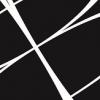How to manufacture Rod Ends?
#1

Posted 15 May 2004 - 00:12
Thanks for your help guy's and cheers ...
#3

Posted 16 May 2004 - 20:19
#4

Posted 16 May 2004 - 21:35
#5

Posted 16 May 2004 - 21:54
I have always wondered how the water jackets and oil galleys are cast into a block as well.
#6

Posted 16 May 2004 - 23:23
Originally posted by Chevy II Nova
Curious question...
I have always wondered how the water jackets and oil galleys are cast into a block as well.
They don't have to be...check out the Mercedes-Benz M196 GP engine of 1955, where the cylinder "block" and head were built up from forgings and formed sheet steel.
#7

Posted 17 May 2004 - 00:06
I think rod ends are forged/swaged around the ball, but I don't know how the nylon layer survives that.
#8

Posted 17 May 2004 - 00:20
Originally posted by McGuire
They don't have to be...check out the Mercedes-Benz M196 GP engine of 1955, where the cylinder "block" and head were built up from forgings and formed sheet steel.
One engineer told me that maraging steel crankcase pieces explosion formed into dies and welded together at one time looked like a viable proposition for F1 cases as an alternative to cast Al alloy. John Barnard and Ferrari did steel cases for F1 around 10 years ago... not sure how they were made.
#9

Posted 17 May 2004 - 00:50
Originally posted by McGuire
They don't have to be...check out the Mercedes-Benz M196 GP engine of 1955, where the cylinder "block" and head were built up from forgings and formed sheet steel.
I was referring to road cars.
#10

Posted 17 May 2004 - 03:39
CC
#11

Posted 17 May 2004 - 11:50
JwS
#12

Posted 17 May 2004 - 14:46
The sphere is actually removable(!!). The sphere has opposing flat faces. When rotated to the proper angle, the flats match with flats in the rod-end, and the ball falls out. Very cool.
#13

Posted 17 May 2004 - 15:11
It is neat to see how some of this stuff is built!
JwS
#14

Posted 17 May 2004 - 16:15
Originally posted by dosco
Here at work we have some aircraft-grade turnbuckles/tierods that have spherical rod-ends.
The sphere is actually removable(!!). The sphere has opposing flat faces. When rotated to the proper angle, the flats match with flats in the rod-end, and the ball falls out. Very cool.
Many spherical bearings and CV joints etc. are made this way (though with CV joints the tolerances are often so close that getting the balls and cage out of their race can be a parlor puzzle).
...On your usual three-piece spherical rod end (sphere, race, and housing) the race is typically swaged to the housing. If you look closely you will usually see a concentric staking ring rolled onto the flats of either the race or the housing... it's not so much when you think about it. Unless the rod end is mounted in double shear, a washer with an OD greater than the ID of the housing is called for.
#15

Posted 19 May 2004 - 16:24
The description was something to the effect of an extremely low friction (2-4 microns) layer with an incredible hardness (3K Vickers?) and good wear characterstics. It has been in developement since '94 and was necessary to reach the current 19K rpm in the modern F1 motor.
It has allowed Ferrari to run their titanium rods directly on the crankshaft with no big end bearings...
Can this be correct?
Unreal.
bb
#16

Posted 19 May 2004 - 23:31
Originally posted by BRNDLL
I just saw mention of something called DLC... Diamond Like Carbon coating.
The description was something to the effect of an extremely low friction (2-4 microns) layer with an incredible hardness (3K Vickers?) and good wear characterstics. It has been in developement since '94 and was necessary to reach the current 19K rpm in the modern F1 motor.
It has allowed Ferrari to run their titanium rods directly on the crankshaft with no big end bearings...
Can this be correct?
Unreal.
bb
Yes it's true, well I don't know exactly how long it have been in development but otherwise it's true but note that the Ferrari part is a rumor not a fact. DLC on the piston pin can replace the small end bushing, which makes it possible to make the small end smaller and allow larger loads since there isn't any soft bronze bushing that can be deformed.
A scanned article about DLC can be found here (can be a little difficult to read):
http://hem.bredband....8/annat/dlc.pdf
#17

Posted 20 May 2004 - 03:06
Originally posted by J. Edlund
Yes it's true, well I don't know exactly how long it have been in development but otherwise it's true but note that the Ferrari part is a rumor not a fact. DLC on the piston pin can replace the small end bushing, which makes it possible to make the small end smaller and allow larger loads since there isn't any soft bronze bushing that can be deformed.
A scanned article about DLC can be found here (can be a little difficult to read):
http://hem.bredband....8/annat/dlc.pdf
Thanks for that
#18

Posted 20 May 2004 - 05:35

















